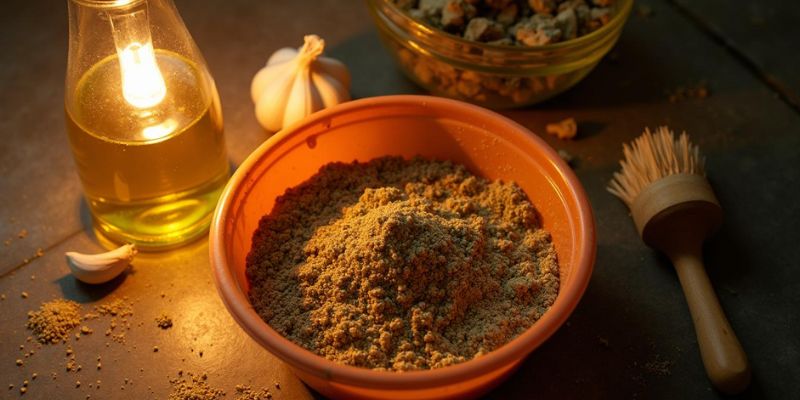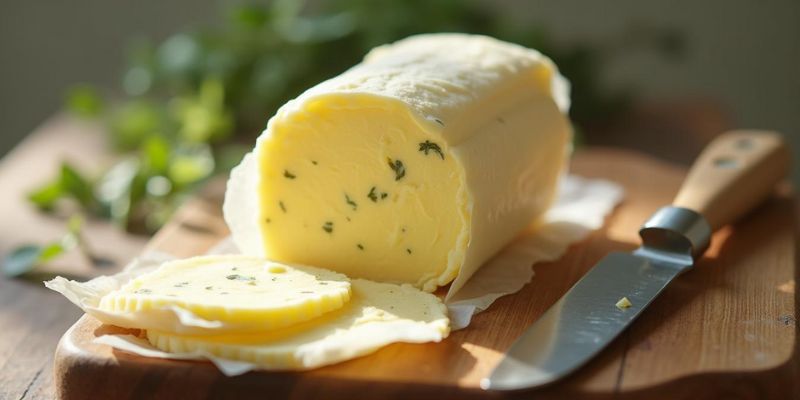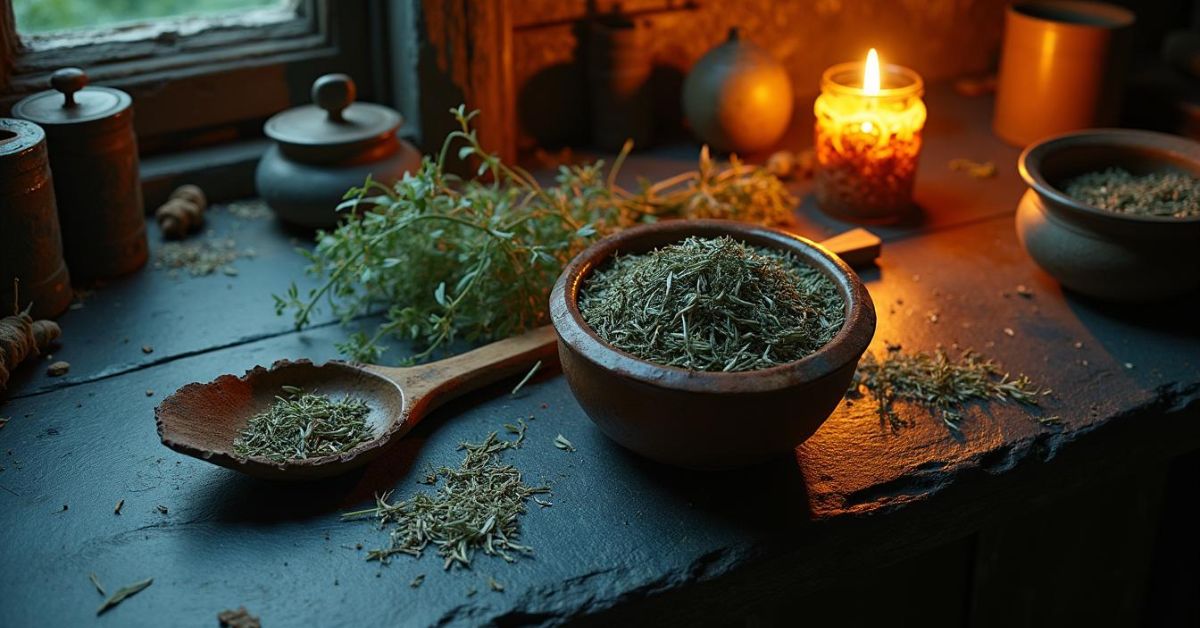Sage isn’t just another herb on your spice rack—it’s a culinary powerhouse that’s been wowing kitchens for centuries. Did you know dried sage was once considered so valuable it was used as currency in ancient times? This herb’s unique earthy and peppery flavor can completely transform a dish, bringing warmth and complexity to even the simplest recipes. Whether you’re crafting a hearty stew, baking aromatic bread, or experimenting with infused butter, it can take your creations from good to mind-blowing.
But here’s the thing—using sage well is an art, and not everyone knows its full potential. That’s why we’re here. This guide unpacks 9 culinary secrets that will show you exactly how to unlock its magic in your kitchen. You’ll get practical tips, foolproof techniques, and ideas that elevate everyday meals to chef-level brilliance. Buckle up, because it is about to become your new favorite ingredient.

Nutrition Profile of Dried Sage
Dried sage is a nutrient-dense herb that packs a surprising punch in small amounts. Just one teaspoon (0.7 grams) contains only 2 calories but delivers 10% of the recommended daily intake (RDI) of vitamin K, essential for blood clotting and bone health. It also provides trace amounts of calcium, iron, and vitamin B6, contributing to overall wellness. Beyond vitamins and minerals, it is rich in antioxidants, including over 160 types of polyphenols like rosmarinic acid and caffeic acid, which help combat oxidative stress and support brain health. Its low calorie and high nutrient profile make it a powerful addition to your diet, even in the smallest quantities
1. Elevate Soups and Stews With Dried Sage
Imagine your spoon sinking into a steaming, velvety bowl of stew, each bite brimming with rich, savory depth. That’s exactly what dried sage can deliver. With its slightly minty and peppery undertones, this herb shines in hearty, rustic dishes like beef stews, chicken noodle soup, or creamy chowders.
Here’s the secret to getting it right—add dried sage early on in your cooking. This gives it time to release its full flavor and mingle with the other ingredients. A pinch or two is usually enough. For creamy potato soups, crushed dried sage enhances the earthiness of the dish while adding a gentle, aromatic kick.
Try this tip next time you make a stew, and watch how something so simple transforms into a gourmet masterpiece.
2. The Ultimate Match for Roasted Meats
When paired with roasted meats, it is pure magic. Its bold, herbaceous profile cuts through the richness of meats like pork, turkey, and chicken, creating a perfect harmony of flavors. Ever wondered why sage is a holiday classic? It’s because it doesn’t just complement roasted meats—it elevates them.
Here’s an idea to get started. Create a simple sage rub by mixing crushed dried sage with garlic powder, olive oil, salt, and pepper. Massage it into turkey or pork before roasting. For an even bolder flavor, sprinkle dried sage into the meat’s cavity or incorporate it into basting sauces.
Your holiday roast will never be the same again!

3. Transforming Vegetables With Dried Sage
Vegetables can be comforting, exciting, and even indulgent when dressed up with the right flavors. Dried sage excels here, adding dimension to roasted root vegetables, mashed potatoes, or even sautéed greens.
For a simple yet stunning side dish, toss diced sweet potatoes, carrots, and parsnips in olive oil, smoked paprika, and a sprinkle of sage. Roast them until they’re golden and irresistibly fragrant. The sage enhances the natural sweetness of the veggies while adding a slightly smoky edge.
Once you try it, you’ll never look at plain roasted veggies the same way again.
If you’re fascinated by the wonders of dried sage, don’t miss our guide to “Dried Rosemary: 5 Magical Reasons to Love“, where we explore another versatile herb that can transform your cooking and inspire new culinary creations!
4. Bake Fluffy Sage-Infused Bread
There’s something magical about the aroma of freshly baked bread filling your home, especially when it’s infused with dried sage. Whether you’re making focaccia, biscuits, or a rustic loaf, sage folds into dough effortlessly, creating layers of flavor that are warm and earthy.
Try mixing a teaspoon of dried sage into your bread dough or biscuit batter before baking. For an extra touch, sprinkle a bit more on top along with coarse sea salt. Sage and cheddar biscuits? Yes, please.
The result? A bakery-quality creation that smells as amazing as it tastes.
5. Infuse Sage Into Pasta and Risotto Creations
Pasta and risotto are blank canvases begging for bold flavors, and dried sage offers just that. Thanks to its concentrated aroma, it effortlessly enhances butter-based sauces and creamy risottos.
For a quick yet indulgent pasta dish, heat butter in a skillet and toss in a pinch of dried sage. Cook until fragrant before folding in cooked ravioli or gnocchi. The heat releases the sage’s essential oils, unlocking a deeply savory, nutty flavor.
This technique also works beautifully for creamy mushroom risotto. Trust me, everyone will think you’ve mastered a Michelin-star recipe.

6. Make Holiday Meals Unforgettable With Sage
What’s Thanksgiving without sage? This herb is the unsung hero of stuffings and dressings, delivering classic holiday nostalgia with every bite.
To craft the ultimate cornbread stuffing, combine sage with sautéed onions, celery, and breadcrumbs. Add chicken stock and bake until golden brown. It’s a foolproof way to impress.
The next time a holiday rolls around, you’ll know exactly how to make sage the star of the show.
7. Brew Sage Tea & More With Dried Sage
Think dried sage is just for savory recipes? Think again. This herb’s calming and earthy qualities lend themselves beautifully to beverages. A simple sage tea is soothing, aromatic, and packed with wellness benefits.
To make it, steep a teaspoon of dried sage in hot water for 5–7 minutes. Sweeten it with honey or add a squeeze of lemon for balance. Sage tea is perfect for cold evenings or moments when you need a little relaxation.
For something more adventurous, create a sage-infused simple syrup to use in cocktails. Pair it with bourbon or gin, and you’ll have a signature drink everyone will talk about.

8. DIY Sage Butter for Gourmet Results
If you need a quick way to elevate everyday dishes into something extraordinary, sage compound butter is your answer. It’s simple to make and endlessly versatile.
Start with softened unsalted butter, then fold in finely crushed sage along with minced garlic or a dash of lemon zest. Roll it up in parchment paper and refrigerate until firm.
Use this butter to top grilled steaks, toss with pasta, or melt over roasted vegetables. It’s like an instant flavor upgrade in every bite.
“Looking to expand your herb game? Discover the 7 wonders of dried oregano for cooking and elevate your dishes to the next level!”
9. Secret to Smoky, Earthy Flavors With Dried Sage
Here’s a little-known trick—toast your dried sage. Lightly frying or toasting it releases its smoky, earthy undertones, creating a richer and more layered flavor.
Heat a dry skillet and add a teaspoon of dried sage. Stir it for 30 seconds until fragrant, then use it to top creamy soups, roasted nuts, or even baked potatoes. You’ll be amazed at how this small step transforms the taste of your dish.
The smoky aroma feels almost magical—like capturing the warmth of a wood-burning fireplace in your food.

Bonus Tips for Mastering Dried Sage
- Use Sparingly: A little dried sage goes a long way. Start small and adjust to taste.
- Release the Flavor: Crush dried sage in your palm before using. This activates the herb’s essential oils for maximum impact.
- Store It Right: Keep it in an airtight container, away from heat and sunlight, to maintain its potency.
Master these tips, and dried sage will work wonders in your recipes.
Unlock the Culinary Magic of Dried Sage Today
With its bold flavor, versatility, and storied history, dried sage is an ingredient worth celebrating. Now that you know its 9 best-kept culinary secrets, it’s time to put them to the test. Try adding it to your soups, baked goods, or even a classic roast, and see how this humble herb transforms your cooking.
Got a favorite recipe featuring dried sage? Share it in the comments below! Whether you’re a seasoned chef or just experimenting in the kitchen, sage has the power to make every meal unforgettable.
“Discover even more ways to elevate your health and cooking with our guide to the 10 breathtaking benefits of dried herbs—a must-read for every kitchen enthusiast!”
Stay connected with us!
- Follow us on Instagram: @RoastedKitchen25 for daily cooking inspiration.
- Subscribe to our newsletter for exclusive recipes, expert tips, and kitchen hacks straight to your inbox!
Frequently Asked Questions About Dried Sage
1. What is dried sage, and how is it different from fresh sage?
Dried sage is simply sage leaves that have been dehydrated, preserving their flavor and extending their shelf life. Compared to fresh sage, dried sage has a more concentrated, earthy flavor. This means you need less of it in recipes to achieve the same intensity.
2. How should I store dried sage to keep it fresh?
Store it in an airtight container, away from direct sunlight, heat, and moisture. A cool, dark pantry is ideal. Proper storage will maintain its potency for up to a year, though its fragrance may naturally diminish over time.
3. Can I substitute dried sage for fresh sage in recipes?
Yes, you can substitute dried sage for fresh. A good rule of thumb is to use one-third the amount of dried sage as fresh, since the flavor is more concentrated. For example, if a recipe calls for a tablespoon of fresh sage, use one teaspoon of dried sage instead.
4. What health benefits does dried sage offer?
Sage is rich in antioxidants, vitamins like vitamin K, and small amounts of calcium and iron. It may support brain health, aid digestion, and even help with blood sugar regulation. Adding just a pinch to your recipes can add nutritional value alongside flavor.
5. How can I enhance the flavor of dried sage in my dishes?
To unlock its best flavor, crush dried sage between your fingers before adding it to recipes. This releases the herb’s essential oils. For warm, smoky flavors, toast it lightly in a dry pan before mixing it into your dish. Both techniques elevate its aromatic qualities.

Food has been at the heart of my life since childhood. My father, a passionate restaurateur, owned and ran Cave Way, a beloved restaurant in Narayanganj, Bangladesh. For 19 wonderful years, Cave Way delighted customers with its warm atmosphere and mouthwatering dishes. It was more than a restaurant; it was a community landmark. When my father passed away, the restaurant’s doors closed, but its legacy lived on in me. As a businessman and food enthusiast, I’ve always felt a connection to the joy and stories that food brings into our lives. Roasted Kitchen is my way of honoring that legacy, sharing my passion, and connecting with others who love cooking as much as I do.










 Subscribe to our free newsletter for tips, tutorials, and insights!
Subscribe to our free newsletter for tips, tutorials, and insights!